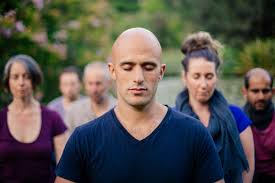More and more people want to learn how to practice mindfulness meditation. This is wonderful, really, because the practice brings many benefits directly to individuals and, through them, to society at large.
And, as demand increases so too does supply. As a result, there are more and more opportunities for learning mindfulness, both in secular and spiritual contexts. This is wonderful, too, but not so simple.
Meeting demand carefully and responsibly is complicated, and brings to mind a particularly thorny set of issues.
- Who should be teaching mindfulness meditation?
- How can people feel confident that they’ve found a reliable and authentic teacher?
There are no simple answers for these questions, but I’d like to offer a few suggestions for consideration:
- Look for consistency: When you find a new mindfulness teacher, be sure to evaluate whether the person embodies the teachings. Put differently, does the teacher practice meditation as well as provide instruction on specific techniques? A mindfulness teacher who isn’t particularly mindful won’t help you, and neither will someone who speaks in generalities and leaves you feeling nice but dull. Unfortunately, there are plenty of examples of unmindful teachers and you’ll know them when you encounter them. They are profoundly dishonest and their lack of integrity is their problem–not yours. Look elsewhere, when a so-called mindfulness teacher, or even someone who simply “teaches mindfulness,” fails to demonstrate mindfulness in their actions, communication and presence.
- Investigate motivation: Is this person teaching mindfulness because he or she lives the practice and teaches out of service, compassion and humility? If so, that’s a good sign. If not, what’s his or her motivation? Is it ambition, and the desire to latch on to the newest fasion? Are they in the business of teaching for personal enrichment, either monetarily or in terms of feeding their ego?
- Know that your mindfulness practice is up to you: You are in charge of your own mindfulness practice, not your teacher. Ultimately, you are the only person who is truly present in this most intimate of mental endeavors. Find teachers who support you in your practice–avoid teachers who want you to support them.
- Find teachers who have teachers: None of us learn to practice mindfulness alone, and as ordinary people, we all benefit from guidance and instruction. There are many techniques and many applications for those techniques, and teachers need teachers so they too can keep learning. Also, a teacher with a teacher has someone who can help him or her stay honest and humble. Teaching mindfulness can become a heady thing. In almost all cases, a self-proclaimed self-taught teacher is to be avoided.
- Be confident in your own discernment: Pay attention to what you learn about and from any given mindfulness teacher, assess whether the person is worthy of your trust, and never ever suspend observation. This is an application of mindfulness practice, and you don’t need to have studied “mindfulness” to work with it
In sum: pay attention when you pursue or encounter a mindfulness teacher. Notice how you feel, inside yourself, during the experience. Apply situational awareness and notice what’s happening around you and with other people. If you feel at ease, within yourself and in the larger setting, and your critical mind is satisfied, then investigate further. If not, go elsewhere. You have options.
One final point: if you are teaching mindfulness, notice your response to this blog post. If these words resonate with you (or simply don’t stick) then continue with your teaching. But, if you feel anger or defensiveness in response, then I challenge you to re-evaluate your intentions and motivations. It’s a simple test: if your conscience is clear, nothing here will fluster or annoy you. But if it does, you shouldn’t be teaching mindfulness.
From: The Huffington Post

